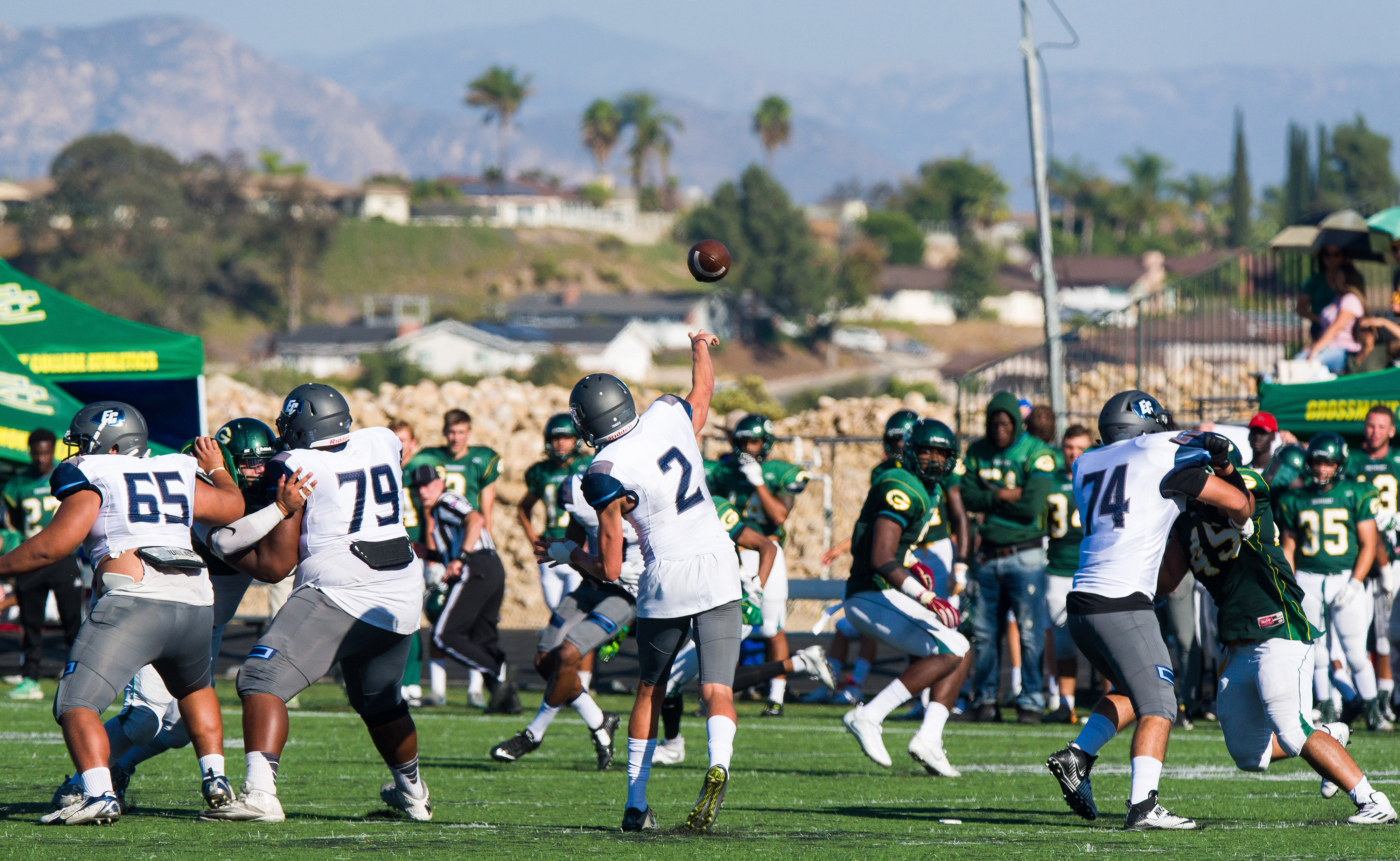Scheduling
Regular Season
The CCCAA states that a team can play a maximum of 10 regular season contests but does not provide a minimum number of countable contests a team must play in a given season. In addition to 10 regular season contests, programs are permitted to compete in one scrimmage per season:
“Teams that participate in (1) scrimmage and/or game per year against alumni from their program. Such contest/date/game/meet/match will not count toward the maximum allowable for that sport and is permitted at any point during the season through the conference competition end date. Unofficial scores and statistics may be kept and publicized but will not count toward their official season record or results, or statistics. The alumni team may only be comprised of alumni from the team's program and no other outside teams or individuals may participate in the contest/date/game/meet/match.” [4]
“Conference championship events shall be counted as one (1) contest/date toward the maximum allowable contests or dates for that sport. Conference championship events shall be counted as one (1) contest on determining the institution’s completed events in that sport regardless of the number of games or days involved.” [4]
While conference championships generally count towards a team’s maximum allowable contests, this is not the case with football because conference championship play occurs under the State Championship tournament umbrella:
“The maximum number of contests does not include postconference competition games, meets, or matches.” [4]
Football teams are also permitted to participate in one foreign tour every three years and can compete in 2 games per tour.
The CCCAA’s regular season format is straightforward. First and foremost, teams play their league opponents. League play typically occurs consecutively in the second half of the season. The remainder of a team’s slate is against opponents from other leagues that are in the same conference and division as theirs. A team in the Bay 6 League, for example, may also play opponents in the NorCal or Valley leagues (all three fall within the National Division and NCFC.)
Postseason
Postseason play, including playoff/championship tournaments and bowl games, begins after the regular season has concluded.
State Championship
Every National Division program is eligible to compete for the CCCAA State Championship title. The playoff bracket consists of six teams from each conference that compete against each other before the championship game. The formula for selecting each conference’s qualifiers is the same. First, the conference’s three league champions are each awarded an automatic bid to the playoffs. Three at-large bids are then awarded to the best remaining non-league champions:
“There will be a six (6) team playoff in both the North and the South leading to a State Championship.” [6]
“The champions and remaining at-large berths of the National Division conferences in each region will compete in a six (6) team playoff to determine the Northern and Southern California regional champion to advance to the state championship game.” [6]
The association utilizes the following tiebreaker procedures in the order of their listing for determining league champions:
“Head-to-head competition or, if three (3)-way tie:” [6]
“The highest ranked team, per the NCFC/SCFA Power Ranking Index.” [6]
“Compare the wins of the tied teams against the top-ranked nonleague teams in the NCFC/SCFA Power Ranking Index (PRI) in the descending order, i.e. compare the tied teams with the team ranked #1, then with the team ranked #2, then with the team ranked #3, etc.” [6]
After selection, the qualifying teams are seeded 1–6 based on the PRI. These seedings dictate which teams participate in the first round, those that receive byes, and host sites:
- The six teams qualifying for the playoffs will be seeded #1, #2, #3, #4, #5 and #6 in the order of the final NCFC/SCFA Power Ranking Index. (Note: League Champions are not guaranteed a top seed)
- The #1 and #2 seeded teams in each region will receive a bye
- The first round of the playoffs will take place as follows:
- Game One: #3 vs #6, with #3 being the host site
- Game Two: #4 vs #5, with #4 being the host site
- The second round of the playoffs will take place as follows:
- Game Three: #1 vs Winner of Game Two, with #1 being the host site
- Game Four: #2 vs Winner of Game One, with #2 being the host site
- The Regional Finals of the playoffs will take place as follows:
- Game Five: Winner of Game Three vs Winner of Game Four, with highest remaining seed being the host
- Seeds will remain the same throughout the playoffs.
The two conference champions meet in the season finale, where a State Champion is ultimately crowned.
American Division Championship
American Division programs, while not eligible for the State Championship, compete for the opportunity to play in their conference’s American Division Championship. Each conference has two leagues in the American Division. The NCFC and SCFA league champions play in their respective championships to determine regional division titles.
Bowl Games
Each conference sponsors five bowl games for its best remaining non-playoff teams. The bowl game names and locations have varied through the years, but the matchups consistently pit the second, third, and even fourth seeds from different leagues against each other. Bowl games allow programs to learn, practice, and compete as a team for an additional week with the opportunity to put a bow on a successful regular season campaign.


